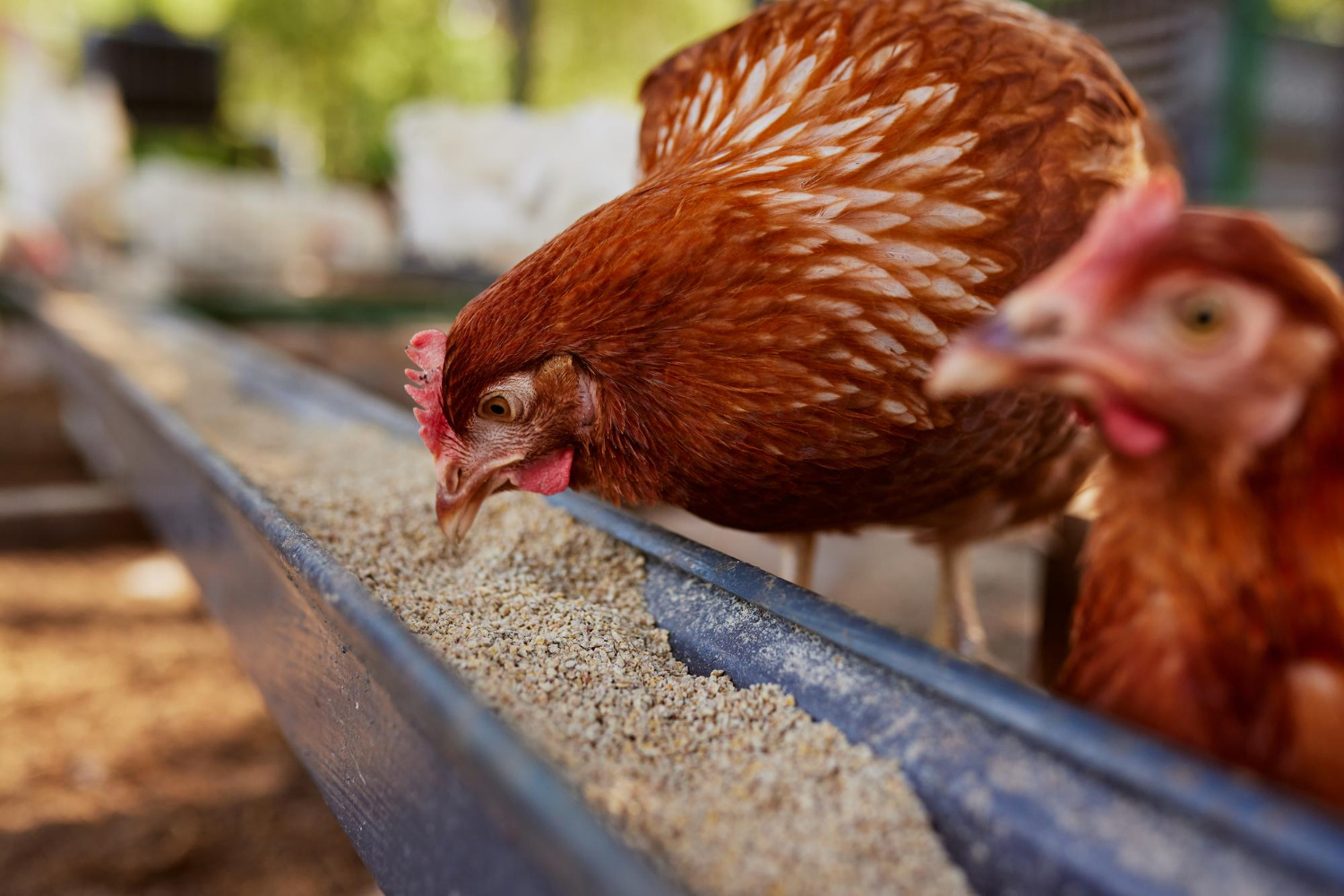Essential Guide to Poultry Feed: Nutrition and Management

At Valvin, after 20 years of working closely with Indian farmers, integrators, and nutritionists, one thing is clear. The difference between an average flock and a high-performing one begins with what you feed it and how you feed it.
But that edge doesn’t come by accident. It takes more than basic poultry feed. It calls for a clear understanding of what birds need at each stage and delivering that in a form they can absorb. Standard feed may cover the basics, but consistent results come from precision nutrition, backed by smart supplementation, to drive faster growth, stronger immunity, and better egg production.
As one of India’s trusted feed supplements for poultry manufacturers, Valvin Nutraceuticals delivers EU-grade animal feed additives tailored for Indian environments. This guide distills what we’ve learned: the building blocks of poultry nutrition, how to manage feed more effectively, and how to get more from every gram you invest.
Because when your feed works smarter, your farm runs stronger.
Nutrition isn’t static. Birds evolve quickly, and so should your feeding strategy.
What is the Importance of Proper Nutrition in Poultry Farming
Birds don’t just need calories. They need the right balance of proteins, vitamins, minerals, and gut support at the right time. That’s what drives- Better weight gain in broilers
- Consistent egg production in layers
- Fewer health issues and stronger immunity
Types of Poultry Feed: Starter, Grower, Layer
Understanding different types of feed is the first step towards smarter nutrition.- What Should You Feed During the Starter Phase (0–3 weeks)? High in protein and energy, starter feed supports the rapid development of muscles, bones, and immune systems. At this stage, gut health matters most; probiotics and immunity-boosting feed supplements for poultry can make a big difference in early survival and future growth.
- What Does Grower Feed Support (4–6 weeks)? During this stage, the focus shifts to steady weight gain and feed conversion. This is where mycotoxins, inconsistent protein levels, and weak digestion can reduce results. Animal feed additives like Valvin MB50 help protect birds from feed-borne contaminants and keep growth on track.
- What Should Layer Feed Deliver (16+ weeks)? Laying birds need a calcium-rich, energy-dense diet to maintain egg production and shell quality. Adding chelated minerals and gut support ensures nutrients are absorbed efficiently, even under stress.
Nutritional Needs at Each Stage
Add the content below in an image/ chart format if possible -| Stage | Key Nutrients | Common Challenges | Valvin Products |
| Starter (0–3 weeks) | Protein, vitamins, probiotics | Weak immunity, poor gut flora | ValBoost – Multi-strain probiotic blend ValCee Plus – Vitamin C with organic acid for immunity support |
| Grower (4–6 weeks) | Amino acids, fats, energy | Feed waste, slow weight gain, toxin exposure | MB50 – Mycotoxin binder (multi-component) ValGuard – Mold inhibitor with buffered propionic acid |
| Layer (16+ weeks) | Calcium, phosphorus, trace minerals | Shell weakness, drop in productivity, fatigue | Chelamin – Organic trace mineral blend Valgen – Immunity-enhancing formulation for performance birds |
How to Formulate a More Balanced Diet
Even when you're using commercial poultry feed, performance varies from farm to farm. Why? Because every setup is different, climate, storage, water quality, stress levels, and even breed. A balanced diet should:- Match life-stage nutrient needs
- Be free of anti-nutritional factors (like toxins or mold)
- Support strong gut function for better absorption
- Reduce waste without cutting corners on performance
What Are Smart Feeding Strategies That Actually Work?
It’s not just what you feed, it’s how and when you feed it.- Stick to stage-specific feed plans. Don’t extend starter feed into grower stages.
- Monitor your feed conversion ratio (FCR). If it worsens, investigate digestion and gut health.
- Use toxin binders proactively, especially in high-humidity or monsoon-prone areas.
- Supplement during stress. Transport, vaccinations, or weather change? That’s when birds need support.
- Keep routines consistent. Feeding schedules and methods directly affect feed efficiency.
- Every gram counts. If it’s not being digested or absorbed, it’s just an expense, not nutrition.

